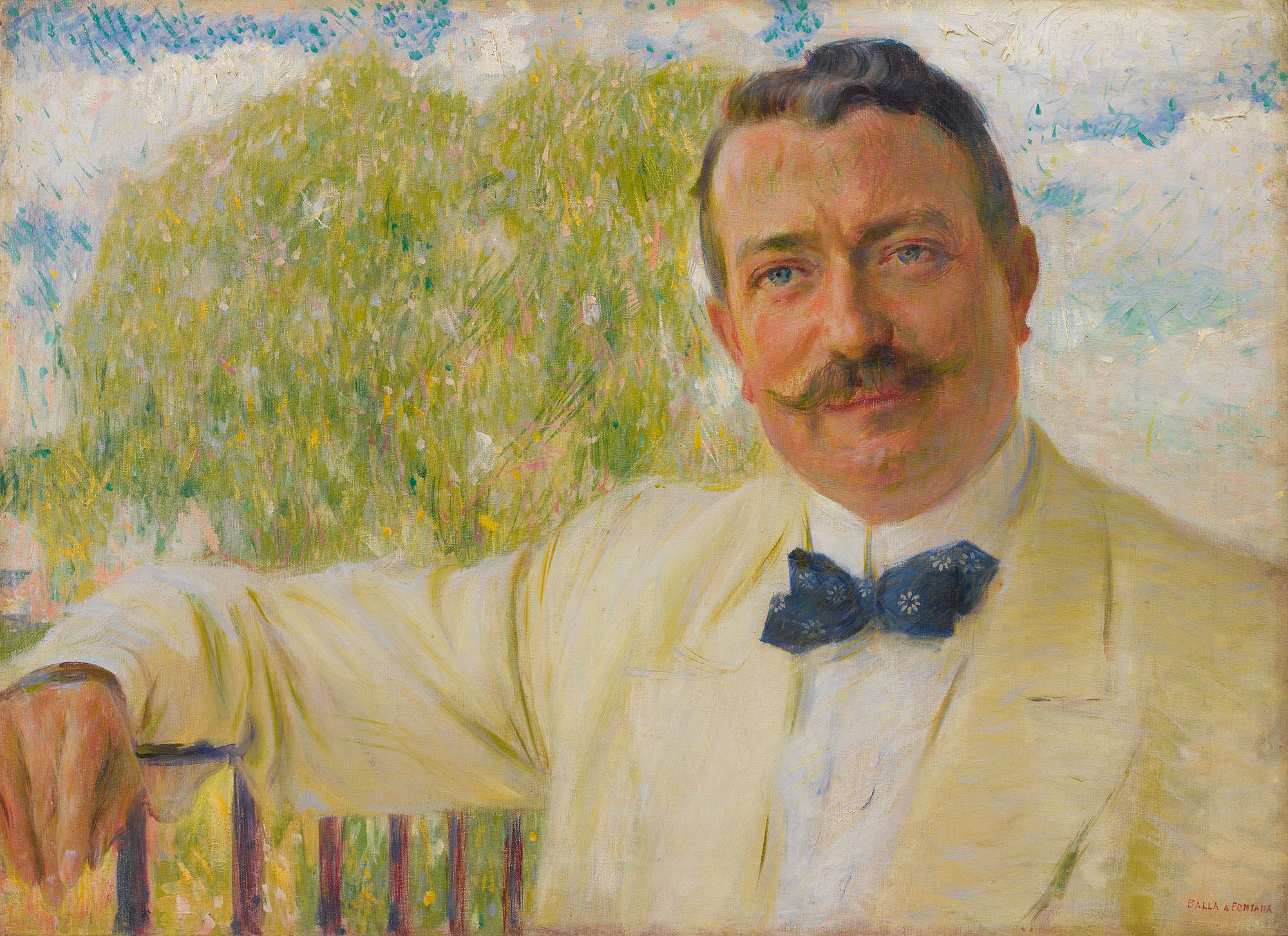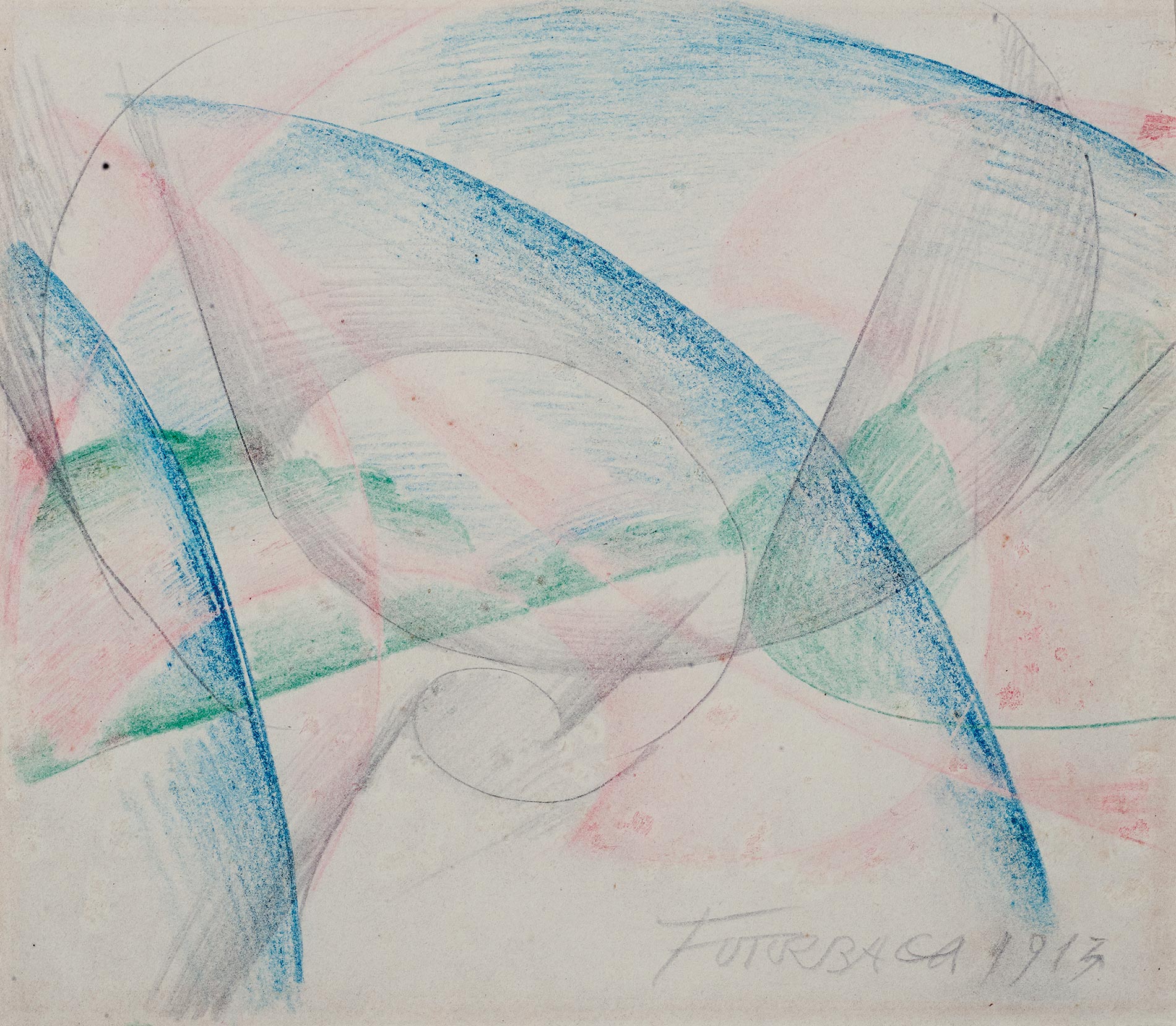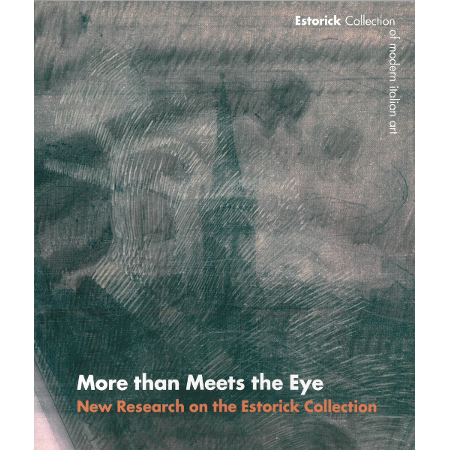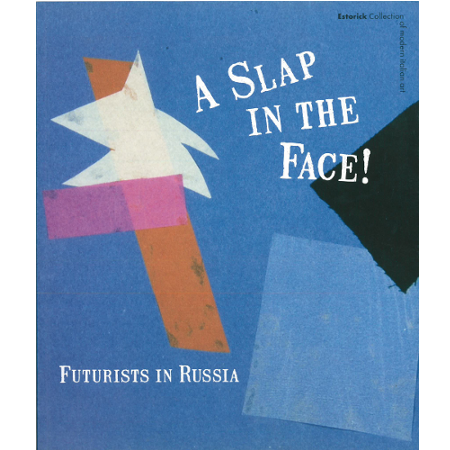Giacomo Balla
The Hand of the Violinist, 1912
La mano del violinista
Oil on canvas
62 x 84.5 x 8cm
In the summer of 1912, Giacomo Balla travelled to Düsseldorf to create a frieze of panoramic Rhine landscapes in the home of his former student, Grethel Löwenstein. Later that year, he wrote to his family: “I am now also close to finishing a study of the hand of the husband playing the violin, but in movement, in different positions and [incorporating] the continual motions of the bow”. (1) In 2015 it was discovered that Balla had painted this work over a study for one of the panels of his frieze (which no longer exists, and is today known only from photographs – see below). Infrared images revealed a view of Düsseldorf beneath Balla’s Futurist masterpiece, with the spire of the Church of St Lambert at the centre. Another version of this scene is visible at the right of the photographic reconstruction of the Löwenstein Study.
Like other works created by Balla at this time, The Hand of the Violinist reveals the influence of the nineteenth-century ‘chronophotography’ of Etienne-Jules Marey and the Futurist ‘photodynamism’ of Anton Giulio and Arturo Bragaglia – both of which aimed to capture the trajectories of human figures moving through different points in space and time. Balla constructed the frame of this iconic work himself, the colours of which echo the violinist’s black sleeve and white cuff, while its shape recalls the trapezoidal form of certain abstract studies of light made by the artist around the same time – the so-called ‘iridescent interpenetrations’.
(1) Cited in Elica Balla, Con Balla, vol. 1 (Milano: Multhipla, 1984), p. 280.
Related works in the collection
Related products
More than Meets the Eye
Primo Conti: A Futurist Prodigy
A Slap in the Face: Futurists in Russia





